pennsylvania
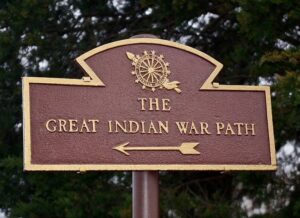
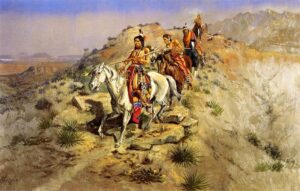 Knowing that a Native American trail called The Great Indian Warpath, also known as the Great Indian War and Trading Path, or the Seneca Trail, ran through the Great Appalachian Valley and the Appalachian Mountains, makes me wonder how many other major trails started out as or connect to smaller trails that had entirely different uses. The Great Indian Warpath was a network of ancient Indian routes with many branches. It crossed the Appalachian Trail in a number of places across several states, including New York, Pennsylvania, Maryland, West Virginia, Virginia, Tennessee, and Alabama. The Great Indian Warpath was a major north-south route of travel since prehistoric times. Parts of the trail are thought to have been used as many as 2,500 years ago when Indian traders from as far away as the Great Lakes, Rocky Mountains, and Mexico traveled parts of the trail. Various northeastern Indian tribes were known to have traded and made war along the trail, including the Catawba, numerous Algonquian tribes, the Cherokee, and the Iroquois Confederacy, even into more recent history, like the Old West.
Knowing that a Native American trail called The Great Indian Warpath, also known as the Great Indian War and Trading Path, or the Seneca Trail, ran through the Great Appalachian Valley and the Appalachian Mountains, makes me wonder how many other major trails started out as or connect to smaller trails that had entirely different uses. The Great Indian Warpath was a network of ancient Indian routes with many branches. It crossed the Appalachian Trail in a number of places across several states, including New York, Pennsylvania, Maryland, West Virginia, Virginia, Tennessee, and Alabama. The Great Indian Warpath was a major north-south route of travel since prehistoric times. Parts of the trail are thought to have been used as many as 2,500 years ago when Indian traders from as far away as the Great Lakes, Rocky Mountains, and Mexico traveled parts of the trail. Various northeastern Indian tribes were known to have traded and made war along the trail, including the Catawba, numerous Algonquian tribes, the Cherokee, and the Iroquois Confederacy, even into more recent history, like the Old West.
Eventually the Europeans and the White citizen of America began to use the Great Indian Warpath trail, which seems a little bit strange when you think about it. Nevertheless, Europeans, Hernando de Soto and his party used the trail when they crossed the Blue Ridge Mountains in 1540. Then, by the late 1600s, British colonists were using portions of the trail regularly, as they traded with the Indians. The British traders renamed the trail, or gave it a nickname anyway. Their name for the route was created by combining its name among the northeastern Algonquian tribes, “Mishimayagat” or “Great Trail,” with that of the Shawnee and Delaware, “Athawominee” or “Path where they go armed.” The combination translated to the Great Indian Warpath. Later, hunters and settlers traveled the trail to explore Kentucky and Tennessee, which led to the first mass western migration in American history, as settlers followed the Wilderness Road through the Cumberland Gap.
As time went on, the people left the trail at different places to go to find their dreams. Those new trails took on new names, such as the Seneca Trail, the Great Valley Road, Kanawha Trail, Wilderness Road, Catawba Trail, Unicoi Trail, and the Georgia Road. As I think about the well-known trail in the area, the Appalachian Trail, and the number of people who travel that trail every year, it makes me wonder if they have ever noticed the trails 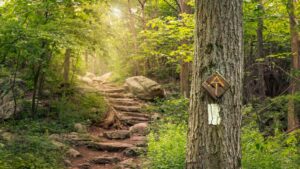
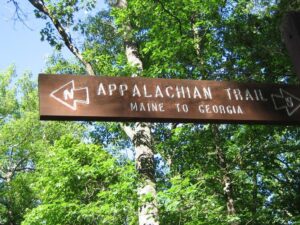 that cross it or split off of it. I have hiked along many trails over the years, and I have seen the many trails that have crossed them. Now I wonder what pioneers might have taken those trails on their journeys to wherever it was that they were headed. It’s unlikely that I will ever know the true stores, but it is nice to think about it anyway.
that cross it or split off of it. I have hiked along many trails over the years, and I have seen the many trails that have crossed them. Now I wonder what pioneers might have taken those trails on their journeys to wherever it was that they were headed. It’s unlikely that I will ever know the true stores, but it is nice to think about it anyway.
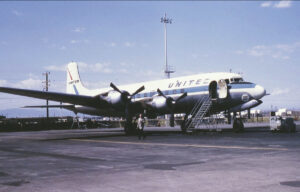 While flight remains one of the safest forms of travel, there is always the possibility of a malfunction that can have devastating effects. In the case of United Airlines Flight 624, a Douglas DC-6 airliner, registration NC37506, was a scheduled passenger flight from San Diego, California to New York City. Very likely, these passengers had taken this exact same flight a number of times, and possibly on this exact same plane. Nevertheless, this flight was about to be very different…and that difference was going to have devastating effects on the plane and on the outcome of this flight.
While flight remains one of the safest forms of travel, there is always the possibility of a malfunction that can have devastating effects. In the case of United Airlines Flight 624, a Douglas DC-6 airliner, registration NC37506, was a scheduled passenger flight from San Diego, California to New York City. Very likely, these passengers had taken this exact same flight a number of times, and possibly on this exact same plane. Nevertheless, this flight was about to be very different…and that difference was going to have devastating effects on the plane and on the outcome of this flight.
Flight 624 took off from Lindbergh Field, in what appeared to be a normal flight. The flight made its first scheduled stop at Los Angeles Airport, followed by a normal scheduled stop at Chicago Municipal Airport. Everything was normal for both stops. In fact, the 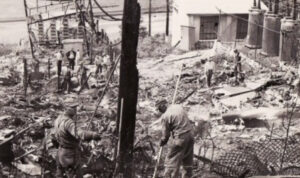 whole flight proceeded normally until they began their descent into New York’s LaGuardia Airport. They began their descent over Pennsylvania, and suddenly, they had a warning alarm telling them of a fire in the cargo hold. The crew responded to what was later determined to be a false signal of a fire in the front cargo hold by releasing CO2. Proper operating procedure called for opening the cabin pressure relief valves prior to discharging the CO2 bottles, to allow for venting of the CO2 gas buildup in the cabin and cockpit. There was no evidence found of the crew opening the relief valves. Either they forgot or it malfunctioned (which didn’t appear to be the case). As a result, the released CO2 gas seeped back into the cockpit from the front cargo hold and apparently
whole flight proceeded normally until they began their descent into New York’s LaGuardia Airport. They began their descent over Pennsylvania, and suddenly, they had a warning alarm telling them of a fire in the cargo hold. The crew responded to what was later determined to be a false signal of a fire in the front cargo hold by releasing CO2. Proper operating procedure called for opening the cabin pressure relief valves prior to discharging the CO2 bottles, to allow for venting of the CO2 gas buildup in the cabin and cockpit. There was no evidence found of the crew opening the relief valves. Either they forgot or it malfunctioned (which didn’t appear to be the case). As a result, the released CO2 gas seeped back into the cockpit from the front cargo hold and apparently 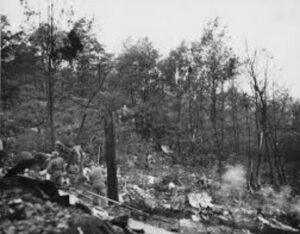 partially incapacitated the flight crew. It would be like being in a closed-up garage and leaving your car running. The decision-making process of the crew became compromised. As things got worse, the crew put the aircraft into an emergency descent, miscalculating their altitude, and as the plane descended lower than it should have, it hit a high-voltage power line and burst into flames. The plane then smashed through the trees of a wooded hillside about five miles from Mount Carmel, Pennsylvania, a small town 135 miles from Philadelphia, at 1:41pm EDT on June 17, 1948. When the four-engined, propeller-driven airplane crashed, it resulted in the deaths of all four crew members and 39 passengers on board.
partially incapacitated the flight crew. It would be like being in a closed-up garage and leaving your car running. The decision-making process of the crew became compromised. As things got worse, the crew put the aircraft into an emergency descent, miscalculating their altitude, and as the plane descended lower than it should have, it hit a high-voltage power line and burst into flames. The plane then smashed through the trees of a wooded hillside about five miles from Mount Carmel, Pennsylvania, a small town 135 miles from Philadelphia, at 1:41pm EDT on June 17, 1948. When the four-engined, propeller-driven airplane crashed, it resulted in the deaths of all four crew members and 39 passengers on board.
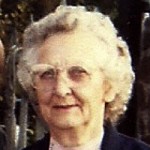
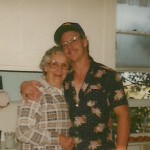 The first official Groundhog Day celebration in the United States took place on February 2, 1887, in Punxsutawney, Pennsylvania, but it had its roots in Germany and was brought to the United States as a German tradition. It may have had other connotations to some people, but for most of us, it’s just a fun way to break the monotony of Winter, by guessing how much longer it will last. It is my guess that old Punxsutawney Phil is wrong about the prediction as often as he is right about it.
The first official Groundhog Day celebration in the United States took place on February 2, 1887, in Punxsutawney, Pennsylvania, but it had its roots in Germany and was brought to the United States as a German tradition. It may have had other connotations to some people, but for most of us, it’s just a fun way to break the monotony of Winter, by guessing how much longer it will last. It is my guess that old Punxsutawney Phil is wrong about the prediction as often as he is right about it.
Since, my husband, Bob Schulenberg’s grandma, Vina Hein was born of Groundhog’s Day, the day has always been a little bit of a fun day for her. Of course, I suppose the level of “fun” would depend on the prediction for that year, and whether or not she liked Winter, which I don’t believe she did…as an adult anyway. Montana winters can be 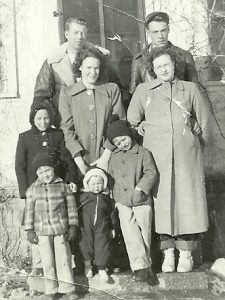 harsh, and Grandma even had to have her daughter Esther Hein live with her son, Walt Schulenberg, and his wife Joann during the winter, so she could be able to get to school more regularly. So, I’m sure she…like most of us, preferred an early Spring prediction, not that the prediction mattered much anyway. After all, what could she do if old Punxsutawney Phil guessed wrong? The same thing we can do today…nothing.
harsh, and Grandma even had to have her daughter Esther Hein live with her son, Walt Schulenberg, and his wife Joann during the winter, so she could be able to get to school more regularly. So, I’m sure she…like most of us, preferred an early Spring prediction, not that the prediction mattered much anyway. After all, what could she do if old Punxsutawney Phil guessed wrong? The same thing we can do today…nothing.
Grandma Hein stayed busy all year long. Between canning in the summer, cleaning, cooking and baking, as well as helping out with the garden and the animals on the ranch, life could sometimes be pretty fast paced. She also raised five children, two from her first marriage, Marion and Walt Schulenberg, and three from her second marriage, Esther, Eddie, and Butch Hein. A ranch, a husband, and five kids can keep a person very busy. Nevertheless, even with the hard work and distance from town, Grandma was happy in her life…most of the time. Having an outhouse wasn’t the easiest thing, but they had one the whole time they lived on the ranch. Grandpa did put one in the house later on, but they only used it in the winter. I’ll never forget using that outhouse. It was like living in a backwoods campground. Still, I loved going to visit Grandma and Grandpa Hein.
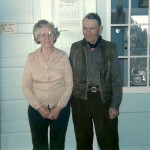

Today marks the 114th anniversary of Grandma Hein’s birth. She has been in Heaven a long time now of course, and I’m sure that the Winter on Earth makes no difference to her. Nevertheless, for any of you that do care, old Punxsutawney Phil saw his shadow today, so there will supposedly be six more weeks of Winter. My guess is that old Phil does better with his predicting when he sees his shadow than when he doesn’t. Happy birthday in Heaven, Grandma Hein. We love and miss you very much.
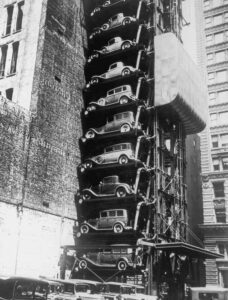 In 1932 Chicago was a city that was on the cutting edge of things, including car ownership. It wasn’t that everyone owned a car, but enough people did that there was beginning to be congestion problem where parking is concerned. It was especially bad for apartment buildings in the city. the people owned a car, but now they had to park so far away that they might as well not own a car. If they weren’t the first one home, they didn’t get to park close.
In 1932 Chicago was a city that was on the cutting edge of things, including car ownership. It wasn’t that everyone owned a car, but enough people did that there was beginning to be congestion problem where parking is concerned. It was especially bad for apartment buildings in the city. the people owned a car, but now they had to park so far away that they might as well not own a car. If they weren’t the first one home, they didn’t get to park close.
Enter the Car Parking Machine. Built by Westinghouse Electric and Manufacturing Company, the system took up the space of six cars at its base, but it held 48 cars. There are numerous compartments in the machine, and they are moving constantly in a vertical direction, like a car elevator. The system was run by an attendant, and when 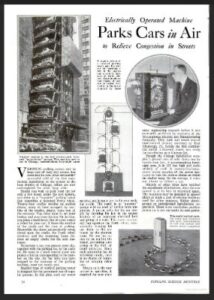 they put a car in a slot, the machine moved it to the next open slot. When the car owner wanted his car back, the attendant rotated the structure until the right car was down, and then backed the car out for the owner, just to be safe.
they put a car in a slot, the machine moved it to the next open slot. When the car owner wanted his car back, the attendant rotated the structure until the right car was down, and then backed the car out for the owner, just to be safe.
The system was such a new phenomenon that they even came out with a short film about it called ‘Vertical Auto Park Solves Problem of Windy City.’ The film shows cars being driven in cages on conveyors that rise in a Ferris Wheel like manner. People look on as cars are carried by a 105-foot-high elevator that parks 48 cars in an area of 16 by 24 feet. It was filmed on location in Chicago, Illinois and aired on April 25, 1932. The Vertical Automatic Parking Lot was actually first tested in East Pittsburgh, Pennsylvania  before being set up as a commercial enterprise in the Chicago Loop during 1932.
before being set up as a commercial enterprise in the Chicago Loop during 1932.
While the system is really quite old, it isn’t necessarily out of date. For example, look at the latest way to buy a car…Carvana. While the purpose of the elevator system is different, the idea is still the same. You find your car online, and then you can go to the car vending machine to get your car. Just like the old system, your car takes a ride in the elevator to get to you. When you think about it, the system was a good one, and should probably be used in more places. Parking congestion is an ongoing problem, after all.
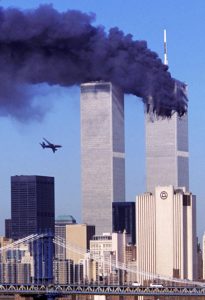
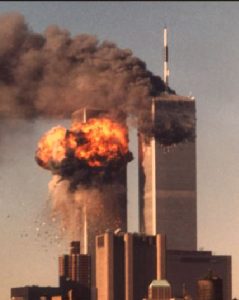 Looking back to September 10, 2001, it seemed that all was right with the world, but in fact, it was not, as we would all find out the very next morning. There were warning signs that terrorists were plotting something, but then weren’t they always. That’s what terrorists do…plot evil, plan to kill as many people as possible, and plan to bring a greater measure of fear into the world. September 11, 2001 would be no different. When 19 al Qaeda militants, hijacked 4 US airliners that morning, the terror had begun. In years past, a hijacked plane was used to take the hijackers to some other country, preferably one without extradition. The passengers were told that this was going to be a hijacking like that, but when the terrorists began slashing people with box cutters, and took over the cockpit, the people knew that this was not a normal hijacking. We all know far too well what the end result of this horrific act of brutal terrorism was.
Looking back to September 10, 2001, it seemed that all was right with the world, but in fact, it was not, as we would all find out the very next morning. There were warning signs that terrorists were plotting something, but then weren’t they always. That’s what terrorists do…plot evil, plan to kill as many people as possible, and plan to bring a greater measure of fear into the world. September 11, 2001 would be no different. When 19 al Qaeda militants, hijacked 4 US airliners that morning, the terror had begun. In years past, a hijacked plane was used to take the hijackers to some other country, preferably one without extradition. The passengers were told that this was going to be a hijacking like that, but when the terrorists began slashing people with box cutters, and took over the cockpit, the people knew that this was not a normal hijacking. We all know far too well what the end result of this horrific act of brutal terrorism was.
In all, 2996 people, including the 19 terrorists, lost their lives at four locations that day. Of those 2996 people, only 291 bodies were found intact. A total of 21,906 body parts were found, and 1717 families got no remains at all. In addition, 25,000 more people were injured, and a large number of them have died of 9-11 related illnesses since then. The smoke and debris that came out of the burning jet fuel and buildings was so toxic, and 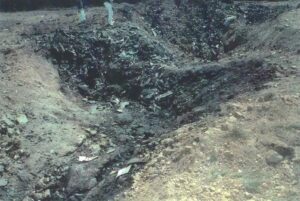
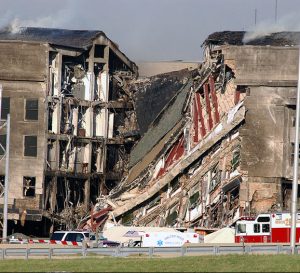 those who helped with the searches and cleanup were exposed. It was a deadly combination. No one knew, or if they did, they disregarded the danger, in an effort to save lives. A few lives were saved. A few people were pulled out of the buildings alive. Theirs was a miracle, and they knew that for the rest of their lives, they would be a walking miracle. Of course, they would also most likely feel some degree of survivor’s guilt, although they shouldn’t. Nevertheless, it is a natural phenomenon, that people tend to struggle with for years, if not the rest of their lives. It never leaves.
those who helped with the searches and cleanup were exposed. It was a deadly combination. No one knew, or if they did, they disregarded the danger, in an effort to save lives. A few lives were saved. A few people were pulled out of the buildings alive. Theirs was a miracle, and they knew that for the rest of their lives, they would be a walking miracle. Of course, they would also most likely feel some degree of survivor’s guilt, although they shouldn’t. Nevertheless, it is a natural phenomenon, that people tend to struggle with for years, if not the rest of their lives. It never leaves.
For those who lost loved ones on that horrible day, it goes without saying that they will never forget, but the reality is that no one should ever forget. How could we forget, when we see that pictures of the planes going into the towers, or the walls of the Pentagon destroyed, or the massive hole in the Pennsylvania earth. Those aren’t just pictures…they are lives. They are lives lost, and families forever changed. They are children who will grow up without parents, people who with grow old without the spouse they had planned to have with them. 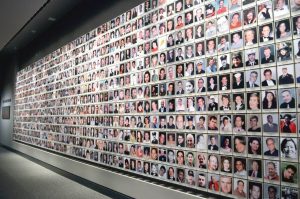
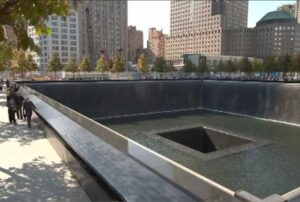 They are sons and daughters, whose lives were stolen from them…whose promise was snuffed out before it could be fulfilled. For all of those people…it is our duty to “never forget!!” Our nation lost the feeling of safety that we had before. We don’t trust those we don’t know as much as we used to. We will always be forever changed. Never forget that!! Ever!!
They are sons and daughters, whose lives were stolen from them…whose promise was snuffed out before it could be fulfilled. For all of those people…it is our duty to “never forget!!” Our nation lost the feeling of safety that we had before. We don’t trust those we don’t know as much as we used to. We will always be forever changed. Never forget that!! Ever!!
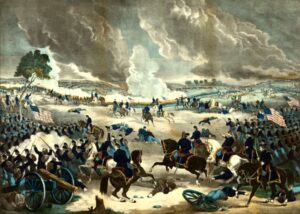
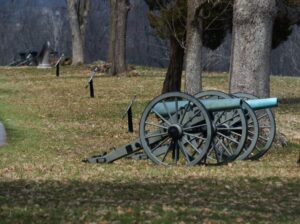 War is a really horrific thing for soldiers to go through, and closure comes in different forms for different soldiers. Returning to the battlefield is a way to find closure for many veterans. It is also a way for solders to keep the friendships they made at a time when their life depended on their fellow soldiers. Countless numbers of men have returned to places like the beaches of Normandy, France to see that place again, where so many lost their lives. Some soldiers didn’t leave the place they fought in their war. Vietnam was that way to a degree.
War is a really horrific thing for soldiers to go through, and closure comes in different forms for different soldiers. Returning to the battlefield is a way to find closure for many veterans. It is also a way for solders to keep the friendships they made at a time when their life depended on their fellow soldiers. Countless numbers of men have returned to places like the beaches of Normandy, France to see that place again, where so many lost their lives. Some soldiers didn’t leave the place they fought in their war. Vietnam was that way to a degree.
The Civil War was unique in that when the veterans decided to have their reunion, they wanted to, of course renew old friendships with those they shared a common bond, but they also wanted to make their reunion a way to bring the north and south back together again. The Gettysburg, Pennsylvania reunion was the largest of these events, and so made headline news around the world. The event took place in 1913 at Gettysburg, Pennsylvania. The Civil War was unique in that all participants were citizens of the United States. Brother fought against brother, and family members against family members. The reunion was a chance to repair those horribly broken relationships for all the men who were still alive at the reunion, which was held on the 50th anniversary of the battle. General H.S. Huidekoper, a Gettysburg Veteran of the 150th PA., was the man behind the idea of making it a gathering of both Northern and Southern Veterans on the 50th Anniversary of the battle. With the state of Pennsylvania, acting as host, $400,000 was set aside to finance the event. The Federal Government added $195,000 and the volunteer services of 1,500 officers and enlisted men. The event was five years in the planning, with Veteran groups throughout the nation helping to make it happen.
The Veterans who were still alive were aging, and because of the reunion, they were able not only to renew the friendships they had, but new friendships were born, and old wounds healed as well. The youngest Veteran, Colonel John C. Clem (known as the Shiloh drummer boy), was 62 years old. The oldest Veteran was 112 years of age. A total of 55,000 veterans attended the event, representing the half million living Confederate and Union Veterans. Of the 55,000 men, 22,103 came from Pennsylvania, and of those, 303 were Confederate. The smallest delegation came from New Mexico…one, a Union Veteran.
The event…one I wish I could have seen, saw over 5,000 tents, covering 280 acres in the middle of the battlefield, where so many had lost their lives. It was almost as if they were there too…giving their approval. Distinguished guests had come to give speeches and presentations. General Daniel Sickles, representing the III Corps at Gettysburg where he lost his leg, was the only corps commander present. On behalf of the battle leaders were the daughter of General Meade and the grandchildren of Generals Longstreet, A.P. Hill and Pickett.
The reunion lasted a full week. The men ate well and swapped stories, cried and laughed. In all 688,000 meals were served by two thousand cooks and helpers. Amazingly and considering the age and health of the Veterans, along with the hot, sultry weather, there were only nine Veterans who did not survive the week, a number well below the normal mortality rate for that day. Perhaps it was the exhilaration of the joining of old friends, reliving days of their youth, hearing the infamous Rebel Yell resound across the battlefield, or reenacting Pickett’s charge to have the Stars and Bars meet the trefoil of Hancock’s II Corps once more that had lengthened their lives.
In the most stunning moment of the event…on the fourth of July at high noon, a great silence fell over the battlefield, as the church bells began to toll. Buglers of the blue and gray prepared to play the mournful tune of Taps one last time. The guns of Gettysburg shook the ground, signaling the end of the weeklong event. When I visited Gettysburg many years later, I was surprised by exactly how that place felt. You could feel the atmosphere there all those years later. It is hallowed ground. You feel like you should whisper…or better yet just be silent. I have never felt that way before, or since.
And though many eloquent speeches were given at Gettysburg that week, none expressed what these Veterans took away from this experience better than a scene witnessed at the train station: “Nearly all of the men had said their good-byes and headed for home. On the station platform a former Union soldier from Oregon and a Louisiana Confederate were taking leave of each other. They shook hands and embraced, but neither seemed 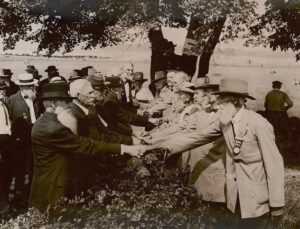
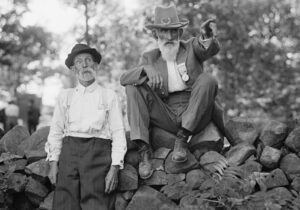 able to find the words to express his feelings. Then an idea seemed to strike both men at once. In a simple act, which seemed to say everything they felt the pair took off their uniforms and exchanged them. The Yankee went home in Rebel gray, the Confederate in Union blue.” The above quote is an excerpt from “Gettysburg: The 50th Anniversary Encampment,” by Abbott M. Gibney, Civil War Times Illustrated, October 1970.
able to find the words to express his feelings. Then an idea seemed to strike both men at once. In a simple act, which seemed to say everything they felt the pair took off their uniforms and exchanged them. The Yankee went home in Rebel gray, the Confederate in Union blue.” The above quote is an excerpt from “Gettysburg: The 50th Anniversary Encampment,” by Abbott M. Gibney, Civil War Times Illustrated, October 1970.
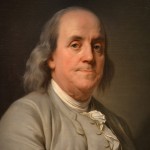
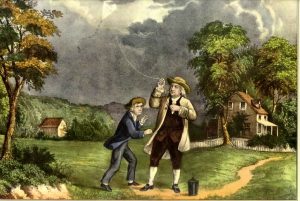 Firefighter and Benjamin Franklin…not usually thought of in the same sentence, but really, they should be. In 1736, Benjamin Franklin was already a young man of influence, but his ambitions didn’t stop at just a few. Most of us think of Benjamin Franklin as a scientist, inventor, founding father, prankster, and writer, but firefighter…hmmmmm, not so much. Nevertheless, Benjamin Franklin was a visionary. He saw a problem and decided to fix it.
Firefighter and Benjamin Franklin…not usually thought of in the same sentence, but really, they should be. In 1736, Benjamin Franklin was already a young man of influence, but his ambitions didn’t stop at just a few. Most of us think of Benjamin Franklin as a scientist, inventor, founding father, prankster, and writer, but firefighter…hmmmmm, not so much. Nevertheless, Benjamin Franklin was a visionary. He saw a problem and decided to fix it.
By 1736 Franklin had adopted Philadelphia, Pennsylvania as his home, but during a visit to his hometown of Boston, Massachusetts, he witnessed a fire, and his mind went into overdrive. What he saw was that the safety precautions to keep fire from spreading seemed to be far more advanced in Boston than in Philadelphia. At that time, Philadelphia’s infrastructure was basically a maze of wooden buildings and houses squeezed together in such a way that it was almost like kindling for a bonfire. Franklin saw this decided that something needed to be done. So, he published his findings in his own Philadelphia Gazette. In doing so, he turned up a different kind of heat. Before long, he was able to round up about 30 of his friends and fellow business owners who were interested. So together, the founded the Union Fire Company. Franklin made sure that The Union Fire Company was a non-profit organization…run completely by volunteers. What made this attractive to these business owners is that it was essentially a promise, to always have each other’s backs, if a fire broke out on or close to one of their properties. Not only were they promising to help extinguish the flames and save homes, but each member was required to keep a heavy-duty bag in which to smuggle out any possessions they could salvage as well. It was a code of honor to try, in the midst of disaster, to salvage whatever they could of the lives of the occupants. The Union Fire Company quickly became the biggest fire relief company in the Colonies, or as they later became, the United States.
Never being one to just sit back and tell others what to do, Benjamin Franklin became a volunteer firefighter himself. Soon, there were six volunteer corps established in Philadelphia. This fire company was the first volunteer fire company of its kind in the United States. When people saw how well the system worked, volunteer fire companies sprung up across the city and soon all over the country. We think of Benjamin Franklin 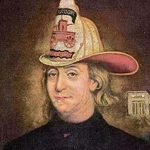
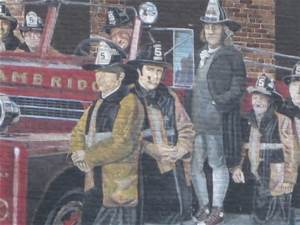 as many things, but in reality, we should maybe think of him as much more than we do. He was the brainchild behind the Great Compromise, which created the Congress we still have today. He was also the first fireman in another way. He “put out the fiery debates” and created a sense of compromise and peace among the founding fathers of our nation too, but he was an actual firefighter in that he actually fought the fires in his city.
as many things, but in reality, we should maybe think of him as much more than we do. He was the brainchild behind the Great Compromise, which created the Congress we still have today. He was also the first fireman in another way. He “put out the fiery debates” and created a sense of compromise and peace among the founding fathers of our nation too, but he was an actual firefighter in that he actually fought the fires in his city.
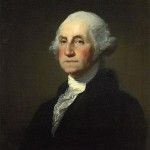
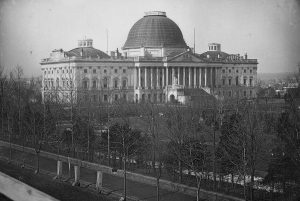 On September 11th, I wrote about the significance if the September 11th date and the terrorist attacks on New York City and the Pentagon, but there was another target that day. The attack on Washington DC was at first thought to be planned for the White House, but it was later determined that the attack was planned for the nation’s capitol building. I have wondered if that September 11th date could have a significance for the capitol too, so I did some research. Unfortunately, I have not been able to find a specific day that the groundbreaking at the capital took place.
On September 11th, I wrote about the significance if the September 11th date and the terrorist attacks on New York City and the Pentagon, but there was another target that day. The attack on Washington DC was at first thought to be planned for the White House, but it was later determined that the attack was planned for the nation’s capitol building. I have wondered if that September 11th date could have a significance for the capitol too, so I did some research. Unfortunately, I have not been able to find a specific day that the groundbreaking at the capital took place.
I did find out that on September 18, 1793, George Washington laid the cornerstone to the United States Capitol building. Now, I’m not a contractor, but it makes sense to me that from groundbreaking to cornerstone, could logically take a week…putting the possible groundbreaking on…you guessed it, September 11, 1793. The building itself would take nearly a century to complete, as architects came and went, the British set fire to it, and it was called into use during the Civil War. Nevertheless, the original groundbreaking took place before September 18, 1793. Today, the Capitol building, with its famous cast-iron dome and important collection of American art, is part of the Capitol Complex, which includes six Congressional office buildings and three Library of Congress buildings, all developed in the 19th and 20th centuries.
As we all know, the brave heroes of Flight 93 foiled that attack on September 11, 2001, which is why the US Capitol building was not destroyed or damaged. Those people saved the capitol building and somehow managed t crash their plane into a field…hitting no one on the ground. They knew that the other planes that had been hijacked, were not landing to have their demands met…they were being flown into buildings, and that meant that they were likely headed for the same fate. They knew that all they could do was to sacrifice their own lives to make sure that this attack did not succeed, and that is what they did, crashing it into a field near Shanksville, Pennsylvania. With a quick, “Let’s roll!!” they ran forward and fought with the terrorists, and while they weren’t able to get complete control of the plane, they made sure it didn’t reach it’s intended destination, and they saved the capital.
I can’t say, for sure, that September 11th was the date that they broke ground on the capital building, but in 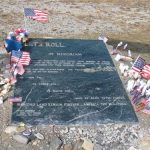
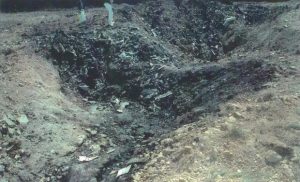 my mind, it makes sense that it was. And that makes it shocking to me. There were some days in Islamic history about September 11, but they were simply battles and such that took place, not the day that a city or place that was being attacked…also being the day that it was founded or had it’s groundbreaking. That makes it monumental, but in the third attack, they weren’t successful, and the plane crashed in a field. Maybe that was monumental too.
my mind, it makes sense that it was. And that makes it shocking to me. There were some days in Islamic history about September 11, but they were simply battles and such that took place, not the day that a city or place that was being attacked…also being the day that it was founded or had it’s groundbreaking. That makes it monumental, but in the third attack, they weren’t successful, and the plane crashed in a field. Maybe that was monumental too.
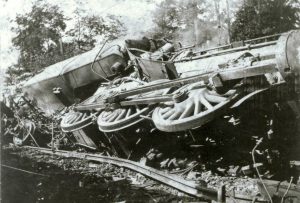 When a train derails, you know that there is going to be a big mess, and loss of life, or at the very least, injuries. And you would probably be right, but it would be a whole different situation, if multiple trains collided with each other. That is the exact scenario on January 17, 1929, in Aberdeen, Maryland, when two Pennsylvania Railroad passenger trains and a freight train all collided. While the collision was horrific, the loss of life was amazingly less that expected.
When a train derails, you know that there is going to be a big mess, and loss of life, or at the very least, injuries. And you would probably be right, but it would be a whole different situation, if multiple trains collided with each other. That is the exact scenario on January 17, 1929, in Aberdeen, Maryland, when two Pennsylvania Railroad passenger trains and a freight train all collided. While the collision was horrific, the loss of life was amazingly less that expected.
On that day, passenger train Number 412, bound from Washington to Philadelphia, struck the freight train, who was also northbound, just after it pulled from a siding, by Short Lane station, near Aberdeen. The freight cars toppled onto the southbound track, directly in front of express train Number 121, from New York to Washington. There was simply not time to avoid the disaster. The wreck killed four trainmen and seriously injured another. Conductors of the two passenger trains declared none of their passengers were seriously hurt. Brakeman, K. A. Klein, on the freight train, and flagman, V. W. Stewart, were both killed in the first crash; and engineer of the southbound express train, A. C. Terhune, and M. Goldstein, his fireman, were killed when their train ploughed into the wreckage.
Bodies of the two from the freight crew and of the passenger firemen were removed and taken to a morgue in Aberdeen, but the body of the express engineer was still under the engine five hours after the wreck. The workmen were prevented from recovering it by outpouring steam. Leon Sweeting, engineer of the northbound passenger train, was badly scalded and was taken to the Havre de Grace Hospital, where his condition was reported to be serious. John H. Lee, fireman on the same train, was in the hospital, suffering from shock.
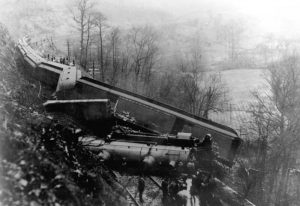
It is thought that heavy fog in the area, prevented the engineer of northbound number 412 from seeing the tail-light of the freight train right in front of him. Some passengers on the northbound and southbound trains were said to have been slightly injured, but none was reported in serious condition. The triple crash tore up about 150 yards of track and uprooted signal and telegraph poles. Trains had to be re-routed over the Baltimore and Ohio Railroad tracks, while relief trains were sent from Baltimore to Aberdeen. While this was not the worst wreck, in fatalities and injuries, I don’t recall too many, if any others involving three trains, and the experience must have been terrifying.
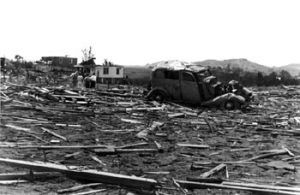 Tornado warnings and warning sirens are things that just about every person knows about these days, but in 1944, they weren’t available at all. It wasn’t that no one had thought about a tornado warning system, but rather that they had and they decided against it,and so nothing was developed. If you’re like me, you wonder why anyone would think it a bad idea to warn people about the possibility of a tornado, but that was exactly what happened. According to a report titled “The History (and Future) of Tornado Warning Dissemination in the United States” by Timothy A. Coleman, Kevin R. Knupp, James Spann, J. B. Elliott, and Brian E. Peters, “Despite promising research on the conditions that are favorable for tornadoes in the 1880s by John P. Finley, a general consensus was reached among scientists in the 1880s and 1890s that tornado forecasts and warnings would cause more harm than good. A ban was placed on the issuance of tornado warnings from 1887, when the U.S. Army Signal Corps handled weather forecasts, until 1938, when the civilian U.S. Weather Bureau (USWB) finally lifted the ban.” Even after the an was lifted, warnings were pretty primitive. Modern tornado warning really took off and began to develop in 1948…too late for the people of West Virginia and Pennsylvania on June 23, 1944.
Tornado warnings and warning sirens are things that just about every person knows about these days, but in 1944, they weren’t available at all. It wasn’t that no one had thought about a tornado warning system, but rather that they had and they decided against it,and so nothing was developed. If you’re like me, you wonder why anyone would think it a bad idea to warn people about the possibility of a tornado, but that was exactly what happened. According to a report titled “The History (and Future) of Tornado Warning Dissemination in the United States” by Timothy A. Coleman, Kevin R. Knupp, James Spann, J. B. Elliott, and Brian E. Peters, “Despite promising research on the conditions that are favorable for tornadoes in the 1880s by John P. Finley, a general consensus was reached among scientists in the 1880s and 1890s that tornado forecasts and warnings would cause more harm than good. A ban was placed on the issuance of tornado warnings from 1887, when the U.S. Army Signal Corps handled weather forecasts, until 1938, when the civilian U.S. Weather Bureau (USWB) finally lifted the ban.” Even after the an was lifted, warnings were pretty primitive. Modern tornado warning really took off and began to develop in 1948…too late for the people of West Virginia and Pennsylvania on June 23, 1944.
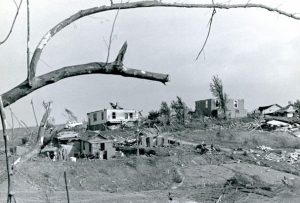
On that June 23rd in 1944, a series of tornadoes across West Virginia and Pennsylvania kill more than 150 people. Most of the twisters were classified as F3, but the most deadly one was an F4 on the Fujita scale, meaning it was a devastating tornado, with winds in excess of 207 miles per hour. The afternoon was very hot, when atmospheric conditions suddenly changed and the tornadoes began to form in Maryland. At about 5:30 pm, an F3 tornado, with winds between 158 and 206 miles per hour, struck in western Pennsylvania. That storm killed two people. Just Forty-five minutes later, a very large twister began in West Virginia, and moved into Pennsylvania. It then tracked back to West Virginia. By the time this F4 tornado ended, it had killed 151 people and leveled hundreds of homes. Another tornado struck that afternoon at a YMCA camp in Washington, Pennsylvania. A letter written by a camper was later found 100 miles away. Area Coal-mining towns were also hit hard on June 23rd. There were some reports that a couple of tornadoes actually crossed the Appalachian mountain range, going up one side and coming down the other…a very rare event with any mountain. Finally, about 10 pm, the remarkable series of twisters finally ended, after the last one hit in Tucker County, West Virginia. In all, the storms caused the 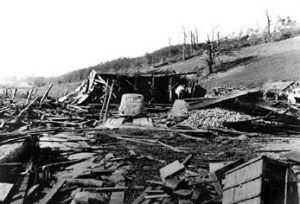 destruction of thousands of structures and millions of dollars in damages, and that was just the monetary losses.
destruction of thousands of structures and millions of dollars in damages, and that was just the monetary losses.
While there isn’t much that can be done to spare property in the path of tornadoes, an early warning, and the appropriate action taken, can save the lives of hundreds of people. Sadly, early warnings were not available to save the 153 people killed in the tornado outbreak of June 23, 1944. They were still in the works, because of all the years wasted when scientists decided it was not in the public’s best interest to know about tornadoes. I’m really thankful that the ban was lifted and we have these necessary warnings these days.

